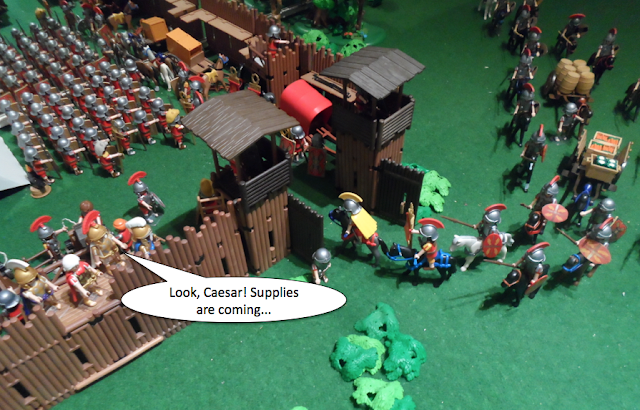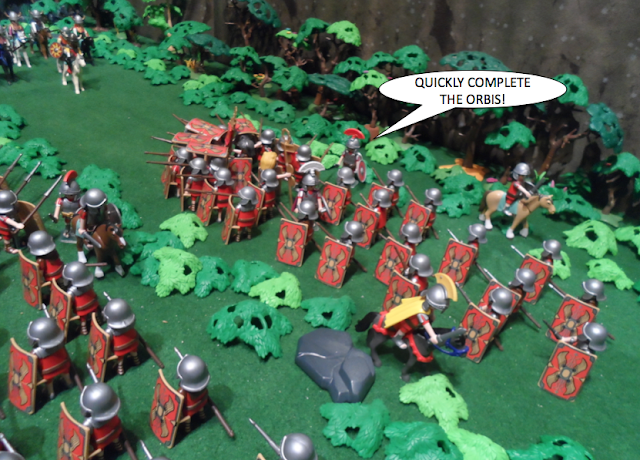

Version Française
Versión española
- Episode 3: THE FALL OF ALESIA -
This story is inspired by historical events that took place during the Gallic Wars between Julius Caesar and the leader of the Gallic Tribal Alliance, Vercingetorix.
Part 1: The Escape of Julius CAESAR
Summary of the previous episode: Julius Caesar and his Roman Legions have just lost two battles against the Oppidum of Gergovia, where Vercingetorix had gathered numerous Gallic forces.
With his experience, Julius Caesar had considered cutting off the city's supplies by building two camps in front of Gergovia.
But the repeated assaults of the Gauls, aided by a Gallic cavalry that was essential in giving the Gauls the advantage, have cast doubt on Julius Caesar's certainties.
He knows that these two battles of Gergovia were important for stability in this Gallic region.
What will he do now in the face of these two failures?
* Discover the details of the AGMEN, the military marching column
under the Roman Empire, at the end of this first part.
The Defensive Circle Position (ORBIS): The ORBIS was a defensive circle position that allowed troops to face the enemy wherever they were.
It was only used in emergencies, against numerically superior armies or those with larger cavalry forces.

- LINK ON THE PART 2 -
>>> BY CLICKING HERE <<<
* AGMEN: A Latin word meaning troop in general. It has a technical and precise meaning in the military language of the Romans.
This word designated a marching column, with a precise marching order: An advance guard, followed by the allies, then their baggage.
Once the advance guard and its baggage have left, the Legions follow. The first Legion with its soldiers in front, then its baggage, then a second Legion with the same configuration, and so on.
The cavalry move because they are faster than the infantry. Sometimes they march behind the Legion to which they belong, sometimes distributed along the flanks of the convoy, ready to defend the AGMEN.
Each of the Legions or wings of the allies marches one day in advance of the other, behind which it is then placed.
Thus, by successively occupying the head of the column, all are equally called upon to take advantage of the water and forage intact.
The Romans employ a different order of march in dangerous circumstances, and when they find themselves on open ground.
They form three parallel columns, placing the baggage of the maniples who march first at the head of all, those of the second after the first maniples, thus placing the baggage and maniples successively, and in the order we have just indicated. By adjusting their order of march in this way, if an attack occurs, they move their troops, turning left or right, outside the baggage, on the side where the enemy is approaching.
Then the line infantry forms battle formation in a very short time and in a single movement.




Version Française
Versión española
- Episode 3: THE FALL OF ALESIA -
This story is inspired by historical events that took place during the Gallic Wars between Julius Caesar and the leader of the Gallic Tribal Alliance, Vercingetorix.
Part 2: I
>>> Link to the previous part by clicking here <<<

- LINK ON THE PART -
>>> BY CLICKING HERE <<<









































































































Aucun commentaire:
Enregistrer un commentaire